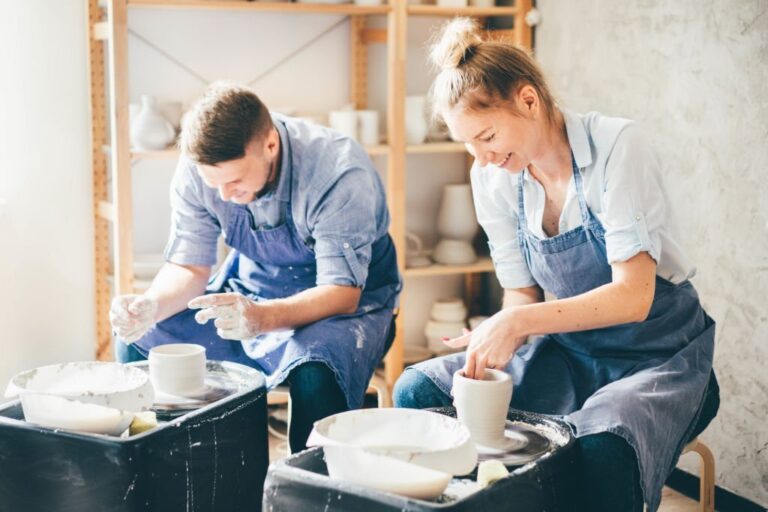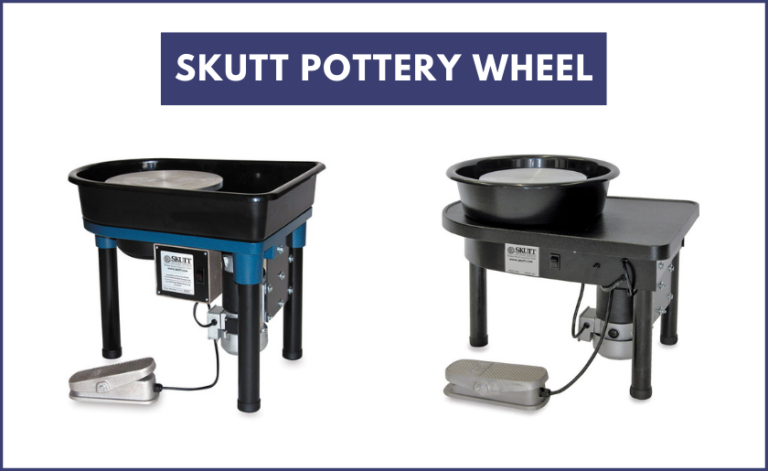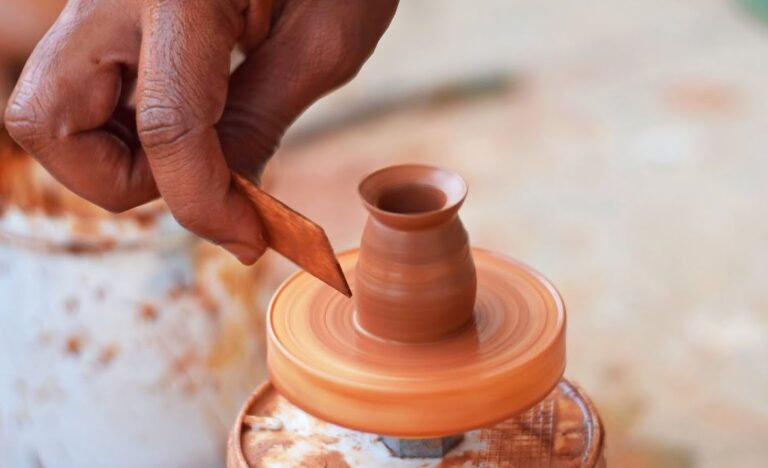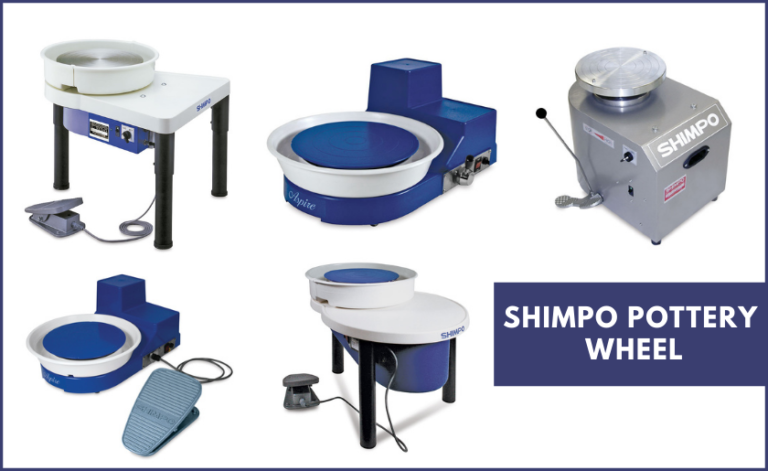Discover the Secrets: How to Identify Old Indian Pottery
To identify old indian pottery, look for distinct styles and markings. Additionally, consult with experts and conduct research on the region and time period of the pottery.
Indian pottery is a product of the diverse cultures and communities that have inhabited india throughout its history. These earthenware artifacts have been found in indian households, temples, palaces, and archaeological sites, and provide valuable insights into the artistic and social practices of the time.
However, identifying old indian pottery can be a challenge, especially for those who are not familiar with the region’s numerous styles and techniques. To recognize the authenticity and age of indian pottery, it is important to consider factors such as the dimensions, materials, style, and markings. Moreover, consulting with experts and conducting thorough research on the region and time period can provide valuable clues to the artifact’s origins and cultural significance.
Types Of Indian Pottery
Indian pottery has a rich history dating back to thousands of years. It has always captivated collectors and enthusiasts alike, with its cultural significance and unique beauty. Identifying old indian pottery can be a difficult task, but there are several types and regional styles to look out for.
In this post, we’ll take a closer look at the different types of indian pottery, their characteristics, and regional styles that will help you identify old indian pottery with ease.
Different Types Of Indian Pottery:
There are numerous types of indian pottery, each with its unique characteristics and history. Here’s a brief overview of some of the most popular ones:
- Terracotta pottery: This is one of the oldest types of indian pottery, and the most common. Made from clay and fired at low temperatures, it has a distinct reddish-brown colour. Terracotta pottery is often found in the form of figurines or simple pots and is prevalent throughout india.
- Black pottery: Originating from manipur in northeast india, black pottery is made from a special type of clay that is found in the region. It is polished and fired at high temperatures to create a unique black finish.
- Stoneware pottery: A more durable type of pottery, it is made from a mixture of clay and other minerals, giving it a sturdier finish. It is most commonly used to make dinnerware sets and other household items.
- Jhaam pottery: A traditional type of pottery from the western indian state of maharashtra, jhaam pottery is made from red clay and is often decorated with intricate designs.
Characteristics Of Each Type:
Knowing the characteristics of each type of indian pottery can help you identify them more efficiently. Here are some of the main features of each type:
- Terracotta pottery: Rough texture, unglazed, lightweight, reddish-brown colour
- Black pottery: High gloss finish, black colour, polished surface, thin wall
- Stoneware pottery: Durable, ideal for daily use, glazed or unglazed finish, heavier and thicker than other types
- Jhaam pottery: Reddish-brown colour, intricate designs, lightweight, often used for ceremonial purposes
Regional Styles:
India is a vast country with diverse cultures, and each region has its unique style of pottery. Here are some of the regional styles you need to be aware of:
- Madhya pradesh: Known for its simple and rustic pottery, the state of madhya pradesh is located in central india. Most of the pottery is made from reddish-brown clay and has a rough texture.
- Manipur: As mentioned earlier, manipur is known for producing black pottery. The region has skilled artisans who use special clay to create unique and beautiful pottery.
- Rajasthan: Rajasthan is one of the most famous states in india for pottery. The region is known for its blue pottery, which has a distinct blue and white glaze.
- Maharashtra: Jhaam pottery, which we discussed earlier, is predominantly found in maharashtra. The region is also known for its terracotta pottery, which is simple yet elegant.
Identifying old indian pottery requires a keen eye and a basic understanding of the types and regional styles. By knowing the characteristics and unique features of each type, you can easily identify old indian pottery and appreciate its beauty and cultural significance.
Techniques Of Indian Pottery
Various Techniques Used In Indian Pottery Making
Indian pottery making is a time-honored tradition that continues to this day. The distinctiveness and beauty of indian pottery stem from the special techniques used in its creation. These techniques include:
- Method of coiling: ** coiling is a popular pottery-making technique in india. It involves creating clay coils and gradually building up the sides of the pot. The potter must ensure that the coils are joined firmly to prevent the pot from collapsing. This technique requires a lot of concentration and patience.
- Polishing and drying techniques: ** after the basic shape of the pot is formed, the potter needs to refine the surface through polishing and drying techniques. First, the potter smoothens out the rough surfaces by rubbing the pot with a smooth stone or shell. Then, the pot must be allowed to dry slowly under controlled conditions. This slow drying process helps prevent the pot from cracking or breaking.
- Finishing techniques: ** once the pot is fully dried, various finishing techniques can be applied to enhance its beauty. These include painting, carving, or embellishing the pot with various materials such as mother-of-pearl or glass beads.
Method Of Coiling
The method of coiling is one of the oldest pottery making techniques in india. Here are some key points to keep in mind about this technique:
- Coiling requires the potter to use clay coils to build up the pot’s sides.
- The coils should be joined firmly to prevent the pot from collapsing.
- The potter must use water to moisten the coils so that they can be easily attached.
- This technique requires a lot of patience, concentration, and skill.
Polishing And Drying Techniques
Polishing and drying are essential steps in indian pottery-making. Here are some important points about these processes:
- Polishing involves smoothening out the surface of the pot using a smooth stone or shell.
- The pot must be allowed to air dry slowly under controlled conditions.
- A slow and controlled drying process helps prevent the pot from cracking or breaking.
- The potter must ensure that all sides of the pot are exposed to air so that it dries evenly.
Finishing Techniques
Finishing techniques used in indian pottery greatly enhance the beauty and uniqueness of the finished product. Here are some key points to consider:
- The potter can choose to paint the pot in various shades using natural dyes or pigments.
- The pot can be embellished with various materials such as mother-of-pearl or glass beads.
- Carving intricate designs into the pot’s surface is another popular finishing technique.
- The potter must be careful not to damage the pot while applying finishing touches.
By using these various techniques, indian potters create unique, beautiful and enduring pottery pieces that continue to fascinate and delight people all around the world.
Identifying Old Indian Pottery
Identifying old indian pottery:
Indian pottery is a captivating mix of beauty, history, and heritage. It provides a window into the past with its intricate designs, aesthetic beauty, and unique shapes. However, distinguishing old indian pottery can be challenging, especially if you’re new to this world.
Here, we’ll look at some critical factors that can help you identify old indian pottery with confidence.
Factors That Determine The Age Of Indian Pottery
Multiple factors can help determine the age of indian pottery. Here are some key ones:
- Material: One of the essential indicators of age is the type of material used. Early indian pottery was typically made from clay, while later versions often included glazed or decorated pottery.
- Technique: Pottery making techniques have evolved over time. Different techniques used in pottery can provide vital clues to the pottery’s age.
- Historical context: The historical context of indian pottery can also provide valuable insights. For instance, knowing the time of a particular dynasty’s reign can help date the pottery.
Physical Characteristics
The physical features of old indian pottery can help in identification. Here are some of the crucial characteristics:
- Thickness: Old indian pottery often has a thicker glaze and is relatively heavier than modern pottery.
- Imperfections: Imperfections are more common in older pottery. This includes variations in shape, size, and decoration patterns.
- Firing: Different firing methods were used at different times, which can help date old indian pottery. Early pottery was fired in pit kilns, while later versions were fired in covered kilns.
Color And Decoration
Color and decoration is another crucial aspect of distinguishing old indian pottery. Here are some essential things to look for:
- Natural colors: Early pottery was plain and natural-colored, while later pottery with colored glazes and high-quality decorations became commonplace.
- Designs: The intricacy and detail of the pottery designs can also indicate age. More complex and intricate designs are usually found in ancient pottery.
- Glaze: The type and quality of the glaze used can also provide clues to the pottery’s age. Earlier pottery had an unglazed finish or a low-quality glaze, while later versions had glazed and high-quality finishes.
Form And Shape
Form and shape are critical elements when identifying indian pottery. Here are some of the key things to consider:
- Shape: The shapes, sizes, and proportions of pottery vessels varied over time.
- Function: The function of pottery also changed over time. Early pottery was used mainly for storage, while later pottery was made for both functional and decorative purposes.
- Style: The style of pottery can be indicative of its age. Early indian pottery had a more straightforward style than later, more ornate pottery.
Identifying old indian pottery requires attention to key factors such as color, material, technique, and historical context. By examining these aspects, you can build your knowledge and confidence in identifying old indian pottery with ease and precision.
Preservation And Care Of Indian Pottery
Indian pottery is truly a masterpiece of art. The intricate designs and patterns, along with the vibrant colors used to create the pottery, make it an object of admiration. However, to preserve the beauty of indian pottery, proper care and maintenance are important.
This section will discuss the various preservation techniques, tips for storing indian pottery, and the cleaning and maintenance process.
Preservation Techniques
Preservation techniques play a crucial role in the longevity of indian pottery. Here are a few preservation techniques you can consider:
- Avoid extreme temperature changes: Indian pottery is sensitive to temperature changes, which can cause cracking or breaking. Therefore, it’s important to store indian pottery at a constant room temperature.
- Handle with care: Pottery is more vulnerable to damage when it is being handled. Always handle indian pottery with care to avoid any accidental damage.
- Avoid direct sunlight: Direct sunlight can cause the colors on indian pottery to fade over time. Therefore, it is best to store it in a shady place.
- Use protective covers: Protective covers can safeguard the pottery against damage caused by dust, pests, or water.
Tips For Storing Indian Pottery
Proper storage is imperative to prevent indian pottery from getting damaged over time. Here are some tips for storing indian pottery:
- Store it in a cool and dry place.
- Use a soft cloth or foam to wrap the pottery around.
- Avoid using paper or newspaper to wrap pottery, as inks can transfer onto the pottery.
- Use bubble wrap or foam peanuts to fill any gaps and prevent movement.
Cleaning And Maintaining Indian Pottery
Periodic cleaning and maintenance can help keep indian pottery looking new even after years of use. Here are some tips for cleaning and maintaining indian pottery:
- Use a soft-bristled brush or cloth to clean the pottery.
- Avoid using harsh chemicals or cleaning agents, as this can damage the pottery’s glaze.
- To remove stains or discolorations, make a paste of baking soda and water, apply it to the affected area, and let it sit overnight.
- After cleaning, allow the pottery to dry completely before storing it.
Proper preservation, storage, and maintenance techniques can keep indian pottery looking beautiful and in good condition. Follow these tips to ensure that your indian pottery remains a prized possession for years to come.
Frequently Asked Questions For How To Identify Old Indian Pottery
How Can I Tell If My Pottery Is Old Indian Pottery?
Old indian pottery is typically identified by its style, color, and design. Tribal patterns, earth tones, and handmade textures are some of the most common features that can identify old indian pottery.
What Is The Significance Of Old Indian Pottery?
Old indian pottery represents the rich cultural heritage of native american tribes. Each pottery piece tells a unique story of tradition, beliefs, and history of the tribe that created it.
Are There Any Specific Types Of Indian Pottery?
Yes, there are various types of indian pottery such as pueblo pottery, navajo pottery, hopi pottery, and zuni pottery. Each type of pottery has a distinct style, design, and artistic features.
How Do I Care For My Old Indian Pottery?
Caring for old indian pottery is critical to its longevity. You should keep the pottery in a dry and cool place, and avoid exposing it to direct sunlight or moisture. You can also use a mild soap solution to clean the pottery and dust it with a soft cloth.
Can Old Indian Pottery Be Valuable?
Old indian pottery can be very valuable, depending on its age, condition, and rarity. Some pieces can sell for tens of thousands of dollars, especially if they are rare or have historical significance.
Conclusion
As we come to the end of this post, it is evident that identifying old indian pottery is no easy feat. From examining the color and design to the texture and shape, several factors come into play when determining the age and origin of a piece of pottery.
However, with the knowledge gained from this guide, you are now better equipped to identify old indian pottery with confidence. Remember to pay attention to details and utilise all available resources, such as specialist websites and forums, when conducting your research.
Whether you are a collector, enthusiast or simply have an appreciation for indian art, understanding and identifying old pottery is a fascinating and rewarding experience. Keep exploring, keep learning and most importantly, keep appreciating the rich cultural heritage that indian pottery embodies.




